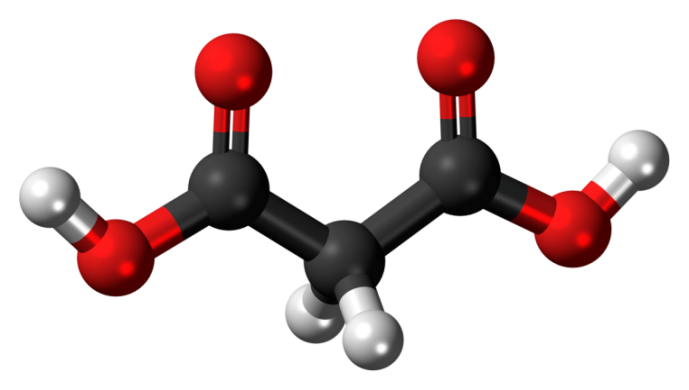
Malonic acid is a is a dicarboxylic acid, which is an organic compound containing two carboxyl functional groups (-COOH). The IUPAC systematic name of Malonic acid is propanedioic acid and the chemical formula is CH2(COOH)2.. Malonates is the ionized form of Malonic acid, including salts and esters and malonates is a competitive inhibitor of the enzyme succinate dehydrogenase. Malonic acid is reported to exist in beetroot with high concentration; however, a study on the composition of sugar beet liquors demonstrates that there is no Malonic acid to be found in the sugar beet.
Scientists at Creative Proteomics utilize a highly quantitative method with high-performance liquid chromatography (HPLC) for the determination of Malonic Acid levels in various samples, including Plant and more. High-Performance Liquid Chromatography (HPLC) using a differential refractive index detector (RID) for the determination of Malonic acid levels in a lot of biological samples. This Methodology provides accurate, reliable, and reproducible results of Malonic acid measurement, which enables us to analyze of Malonic acid levels in vitro and in vivo.
Malonic acid is a kind of competitive inhibitor, which is a form of enzyme inhibition where binding of the inhibitor to the active site on the enzyme prevents binding of the substrate. For example, Malonic acid acts against succinate dehydrogenase, which is an enzyme complex, bound to the inner mitochondrial membrane of mammalian mitochondria to participates in both the citric acid cycle and the electron transport chain. malonyl-CoA is the coenzyme A derivative of malonate, is an critical precursor in fatty acid biosynthesis. Malonic acid is also used as a competitive inhibitor of succinic dehydrogenase, which is responsible for the dehydrogenation of succinate within Krebs cycle.
The Russian-Polish botanist M. Tswett is generally recognized as the first person to establish the principles of chromatography. In a paper he presented in 1906, Tswett described how he filled a glass tube with chalk powder (CaCO3) and, by allowing an ether solution of chlorophyll to flow through the chalk, separated the chlorophyll into layers of different colors. He called this technique “chromatography”. Fundamentally, chromatography is a technique used to separate the components contained in a sample. High Performance Liquid Chromatography (HPLC) is a method able to separate non-volatile, thermally unstable, and polar components separate or in a mixture. HPLC is a type of chromatography that, because of its wide application range and quantitative accuracy, is regarded as an indispensable analytical technique, particularly in the field of organic chemistry. It is also widely used as a preparation technique for the isolation and purification of target components contained in mixtures.
Malonic acid Analysis Service at Creative Proteomics supports your research in N Malonic acid Analysis. HPLC Based Analysis Service Platform enable us at Creative Proteomics offers you a state-of-the-art Analysis Service.
Sample Type
Plant and more
Method
High-Performance Liquid Chromatography (HPLC) using a differential refractive index detector (RID) for the determination of Malonic acid levels in a lot of biological samples. This Methodology provides accurate, reliable, and reproducible results of Malonic acid measurement, which enables us to analyze of Malonic acid levels in vitro and in vivo.
Send us your samples, you will get all information that you need!







